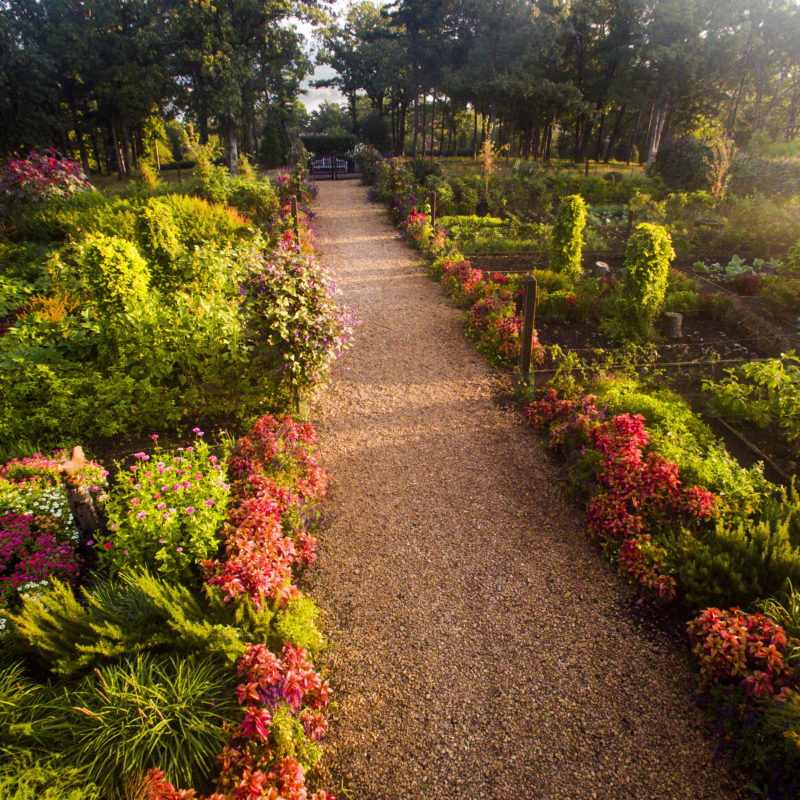Guidance for Greenhouse Growers and Garden Center Retailers
Plants in your customer’s yard can be pretty and taste good, too!
There are many ways to grow edibles when space or resources are limited. Encourage consumers to look at their landscape with new eyes; every little open spot might be an opportunity for an edible plant. Here are some ideas:
- WINDOW BOXES are a very traditional way to grow herbs and small vegetables close to home. Vegetable plants that do best in window boxes are very compact and don’t mind being close together. Red Robin dwarf tomato is a perfect example. Red Robin sets loads of tasty little cherry tomatoes on a cute little 6-inch tall plant. Basil makes a nice companion plant for Red Robin. At harvest time, home gardeners can skewer mini fresh mozzarella, a red robin tomato, and a basil leaf on a toothpick. Drizzled with olive oil and salted to taste… they are irresistible!
- LARGER CONTAINERS work well on patios, driveways, side yards and sturdy balconies. Half wine barrels are a great size. If they aren’t available offer your customers containers that are at least 12-18 inches tall and 18-24 inches across with holes in the bottom for drainage. Peppers and compact tomatoes will grow well in containers this size – Jalafuego jalapeno is ideal for limited space. Plants are study and productive and the fruit are very hot, a few peppers go a long way. Sweet Hearts grape sets loads of sweet red grape- shaped tomatoes on 24-36-inch plants. Gardeners can keep tomatoes off the ground by providing a small trellis for the plant to climb.
- LEAFY CROPS are very ornamental and do well in smaller containers, especially when harvested at the baby stage- as early as 21 days from germination. Bowl-shaped and shallow bulb pots look pretty when planted with an assortment of greens. Lettuce is a nice start, but for additional shapes and textures add mustard, spinach, dill, arugula, beet greens and Swiss chard and harvest at the baby leaf stage. Keep a little pair of kitchen shears and some dressing handy and you’ll have fresh salad ready to go. For a full list of leafy green possibilities see page 29 of the Sakata Home Grown Catalog.
- FLOWER BEDS can be another great place to fit in edibles. Many cooks like to have herbs close at hand and plant a few plants right outside the kitchen door. Basil, Dill, and cilantro are all best eaten fresh- why not encourage customers to plant them a few steps from the kitchen? Kale, Swiss chard, and turnip greens all have very large ornamental leaves that look nice planted under tall flowering bushes or used as a backdrop for smaller bedding flowers. The large leaves can be harvested, chopped and sautéed in 5-10 minutes for a healthy side dish. Kale is at the top of our “Power List” of vegetables on page 25 of our catalog.
- GROW UP! Trellises come in a wide variety of shapes and sizes and allow plants to grow vertically so they require a very small foot print. Slice More cucumber, for example, is very happy and productive when grown vertically. Fruit can be harvested small for pickles or larger for slicing. Nasturtiums, pansies, and dill all have edible flower that complement the leaf shape of cucumber plants. With six to eight hours of sunlight, indeterminate tomatoes also perform well on a trellis. Cherry tomatoes such as Sweet Million are early and productive.
- DRAMA! Edibles can have very dramatic leaf and flower forms. Many home gardeners don’t realize that okra is in the same family ornamental hibiscus. The leaves are large, deep glossy green and have an interesting shape. Okra flowers are usually a creamy yellow with a maroon interior. Jambalaya has a nice compact plant that is very productive and can fit nicely in an existing planting. Enjoy the flowers and then pick the pods often to maximize bloom.
- HEIGHT! Corn is another interesting plant that you don’t often see in small garden spaces. However the tall stalks resemble some of the ornamental grasses and bamboo that are so popular- with the added bonus of fresh sweet corn. The stalks can make a nice screen or backdrop for shorter plants and make a lovely sound in the wind. They can be planted close and at irregular intervals, the only side effect being smaller ears. Our K2 produces super sweet white ears in about 78 days and prefers warm soil. If your customers don’t eat it right off the ear, recommend they try the below recipe for fresh corn chowder. Fresh corn chowder is a summer or fall treat that will drive them back out into the garden (and the garden center) every spring!
RECIPE: Remove the kernels (and set to the side) and simmer the cobs with celery stalks, hunks of carrot pepper corns and bay leaf. After about an hour or so, strain and reserve the broth. In the same large pot sauté finely chopped onion or leek in some butter for about 5 minutes. Add your broth back with the reserved kernels and some peeled and chopped potatoes. Bring to a boil and then simmer for about 30-45 minutes, until potatoes are very soft. Mash up some of the potatoes and add a little milk or cream, and some salt & pepper.
Edible plants add drama, versatility and purpose to any landscape. Consumers should be reminded that vegetable and herb seeds and plants are readily available and very affordable as compared to other landscape choices. With a little ingenuity and upkeep, any space can be beautiful and edible- spread the word!
